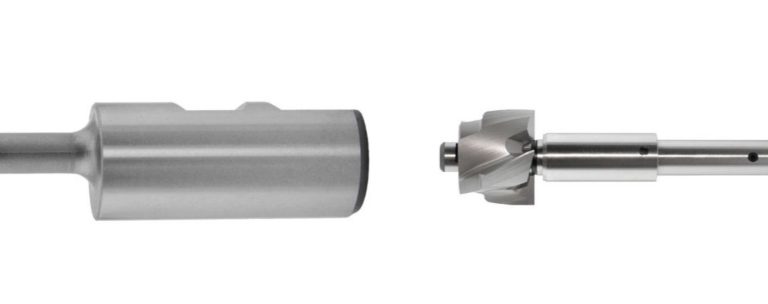The Evolving Role of Tool Coatings As a Performance Booster
By guest blogger Mark Romach, Engineering/R&D Manager at Advanced Coating Service (ACS)
For machinists and shop owners who rely on tool coatings to boost performance in the most demanding applications, using the best cutting tool coatings and coating processes are a significant factor. But like so many new manufacturing technologies, what’s considered “the best” continues to evolve, making it a moving target and often a source of confusion. Here we’ll break it down for you. We’ll offer expert insights to help you understand what’s happening in the world of tool coatings – whytool coatings are significant, how they’ve evolved, and what’s on the horizon.
Why The Need For Tool Coatings?
First, a quick history of PVD coatings for cutting tools. It started with some pioneering companies applying ultrathin TiN coatings to the cutting edges of a machine tool bit to extend the lifetime of a tool. From there, it wasn’t too long before process engineers were designing new and improved coatings as a premium product offering and machinists began to see the benefits of the new technology.
As TiN was put into use, manufacturers began looking to PVD coatings to solve other tooling issues, including the sticking of the material being machined to the flutes and cutting tip, heat build-up at the tip, and friction. TiCN, TiAlN, and AlTiN were all variations of the composition of TiN that helped solve these issues.
How Have Tool Coatings Evolved?
Over time, the focus shifted to modifying film structures from a single layer coating, to multilayers and gradient film structures, and then nanolayers, and finally nanocomposites, plus the modification of the compositional materials of the film to form new materials.
Most recently, we’ve seen a strong focus on the synergy and interaction that exists between the tool design (geometry), tool material and grade (substrate), pre- and post-treatment of the cutting edges, choice of coating, material being machined, and method of machining (application). While TiN is still the workhorse of the industry due to its relative low cost and familiarity to end users, there are many preferred coatings that can offer improved performance — especially when the synergistic effects are factored into the equation.
A Rising Demand For “State of the Art” Tool Coatings
A quick review of today’s patent applications and media releases confirms that the focus is, indeed, on synergy; a trend that is shaping the current tool coatings marketplace. In response to the demand for more synergized solutions, tool designers and manufacturers are embracing new processes and emerging technologies as they design custom solutions to differentiate themselves from the competition. This trend, along with some other recent developments, is playing out across the manufacturing industry in a few different ways:
- “Synergy” is encouraged by asking a customer a range of questions: how is your tool being used? What material is being machined? Are coolants used during machining? What is the speed or horsepower limitations of older machines? Those are some basic questions that may be asked in addition to a variety of other pertinent (and less obvious) questions. The answers to those questions can be factored into final decisions of both tool design and coating choice; thus a synergy that optimizes the finished tool.
- Pre- treatments like edge honing are being used to microscopically round the cutting edge, due to the fact that PVD coatings often don’t grow in “perfect” structure on a highly sharpened edge. The minutely de-sharpened edge gains a disproportionately longer lifetime because the edge can be better protected by the hard coating.
- Coating specifications, like film structure, thickness, and composition are optimized for the tool type, design, and machining New coatings are introduced every year.
- Post-treatments, often called honing or polishing, can be used to optimize the surface finish of the tool as a means to improve its performance.
- The hardcoating industry is using a variety of PVD technologies to produce surfaces that provide reduced friction, improved cutting edge protection, plus chemical and thermal isolation. It is also using DLC (Diamond Like Carbon) and amorphous carbon coatings as available film options, incorporating nanocomposite layers into the film structures, and developing oxi-nitride and oxide top coatings.
- In the composite machining niche market, for example, aerospace applications where the increased cost of the coating can be more easily justified, we are reading numerous reports that CVD diamond coatings produce chemically inert films that perform very well for those materials. It could certainly be argued that CVD-grown films in general have some superior benefits in adhesion and toughness; however, the high coating temperatures for CVD limit the application of those films to niche markets like the diamond films, giving us reason to pursue the PVD hardcoating film offerings in our applications.
Summing It All Up
At the end of the day, it’s important to understand that tool coatings are performance add-ons that, under the right circumstances, provide financially beneficial upgrades. The “right” coating will not correct the wrong tooling material, an incorrect grinding geometry, or low quality tool blanks; however, it can serve as a performance boost that reduces the cost of manufacturing for the end customer.
With the higher cost of some of the exotic tool coatings, the coating must be cost effective and process beneficial on multiple levels to be considered. Additionally, we’ve learned the benefits of a partnership between the coater and the end user. When both are committed to mutual success, a number of iterations can be tested to find the optimized combination of tool design and construction, coating and application where true synergy exists.
To offer customers a premier product, Steiner partners with ACS to provide a combined tool design/coating package that will boost tool performance. If you have any questions, or would like to inquire about our tool offerings that save you time and money, please don’t hesitate to ask
About the Author
Mark Romach is an Engineering and R&D Manager at Advanced Coating Service (ACS). With experience in the thin film vacuum coating industry beginning in 1981, Mark remains focused on the latest technological knowledge in tool coating. His expanded knowledge and expertise in the thin film coating world helps customers like Steiner boost performance and create most cost-efficient processes.







